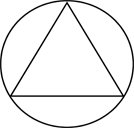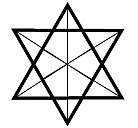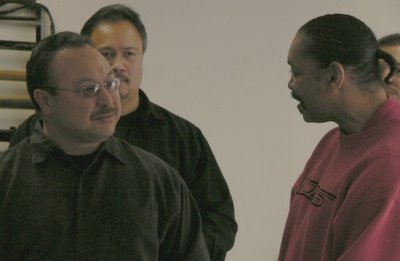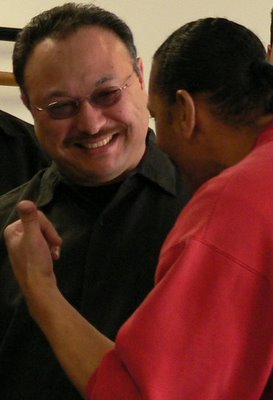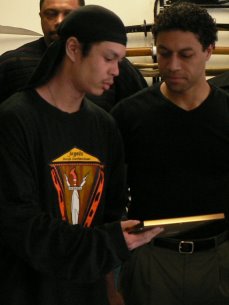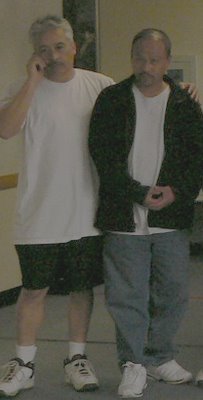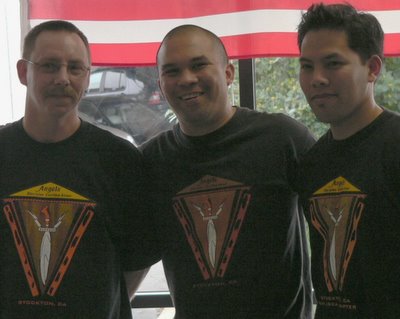Since the gathering in Sacramento two weeks ago, there’s been a lot of positive chatter about both the event and the possibility of some sort of unification within Serrada. While it’s certainly premature to make any forecasts, the buzz alone is noteworthy, if for no other reason than to bring this topic up once again on the radar screens of those involved in this art.
I suspect those in leadership positions are monitoring the pulse of things. In politics this would be called taking a poll. While there is no electorate to satisfy here, the big guys have their own desires and agendas, and many have an appreciation of both the advantages of working in unity and the downside that the schism within the Serrada family has had in terms of general public view of this art. While controversy might be music to the sales departments of magazines, in the boots-on-the-ground world of teaching martial arts, it probably turns away more students than are attracted by it.
Like anything in the world of politics, a lot happens behind the scenes to set the stage for the main actors to appear. Whether or not the various heads of organizations are talking to each other privately or not, those of us on second and third level tiers are kicking around ideas, and it sounds like a lot of similar views are coming up. Hopefully this kind of thing filters up to loftier elevations, or perhaps like the
Hundredth Monkey theorem, if enough people begin to believe a change will happen, eventually it will become part of the consciousness of the group through
morphic resonance.
The following is essentially a repost of a response I made on a Serrada newsletter. All this may come to naught, but for what it’s worth, here’s one possible way to go about things. This is essentially the same advice I (and others) have been giving (usually unsolicited) for the past 15 years.
**********************************
I don't necessarily envision a Serrada unification as a single entity, but rather an association of related organizations. A model for this might be Kajukenbo, which despite differences retains an umbrella identity. Within Kajukenbo are several formally recognized and distinct styles that have evolved, and within each of them are member organizations consisting of businesses started and run by entrepreneurial teachers, each with their own following of students.
If Serrada were to try to organize into a larger body, I certainly don't see the present organizations dissolving themselves. The model I'd envision would base itself on a board of directors consisting of heads of various member bodies and perhaps others elected at large according to a charter. This isn't unlike corporations whose boards are populated by representatives of other businesses that hold large blocks of voting shares.
Under such an arrangement, Vincent could operate like the president or chairman of the board. The CEO does all the real work of running the business, so someone who is motivated to be involved in that capacity could help move things forward. In fact, many countries run like this too, with a President at the head for ceremonial purposes and a Prime Minister to carry out policies and to maintain coalitions of political parties.
What benefits might come from such an arrangement?
First and foremost is the question of qualifications for ranking both instructors and students. An association can set standards by which members of different participating organizations would be recognized. This alone would alleviate a sticking point within the art. Testing could take place within schools for student ranks, much like is done now on whatever basis the head instructor chooses, but if a formal structure is used, teachers from other schools could be invited to sit as witnesses on promotion boards.
A larger organization can draw on the energy of membership to host a variety of events through the course of the year. For instance, there could be a commemorative tournament on Angel’s birthday and an awards banquet on the anniversary of his passing. Testing boards could convene periodically for those seeking teaching rank, in conjunction with seminars for the benefit of all instructors.
There are other possibilities that could eventually come up as part of the growth of an art, such as reworking a ranking system. For instance, the 12 angles in Serrada are each promotions within the art, but these are akin to kyu ranks in karate. Any diligent student can learn the angles. What takes place beyond that, though? Not all who graduate will teach. Some great fighters are temperamentally not qualified to teach or simply have no interest, and not all great teachers are the best fighters. Nevertheless, our society is a meritocracy where people expect to be rewarded for time and effort. There could be separate recognition for both teaching and non-teaching members, rewarding skill and dedication for those who are committed to the art. Few who train will become masters, but there should be a way to acknowledge the difference between a teenager who has just graduated from the 12 angles and a teacher who has decades of experience.
Right now such a proposal sounds controversial, especially since there is no precedent within Serrada for these things, and nobody would recognize such innovations outside the school that did this. Nevertheless, if there were an organizational body, changes such as these could help expand the art. What works well for a small academy might not be the right model for creating a network of schools across the country or the globe. Many small businesses in all fields have learned that it takes different skills to operate on a larger scale.
Perhaps this isn’t the right direction for Serrada. Maybe this is an art that will stay close to home, or spread underground organically, beneath the radar of public awareness. There are those who think it should stay this way, held secretively in private. There are other possibilities, however. This is a beautiful and exciting art with the potential to move out in the world. Angel didn’t promote guros and masters just to have Serrada go back into hiding; he was proud of his art and his students and encouraged those of us with the desire to continue to propagate it. How we do so is up to us, whether each by our own designs or by working together towards larger goals.
**********************************
A quick aside to those who might think I’m yearning for the good old days yet to come. I am not a fan of big schools, organizations, or even big parties. I’ve done the bulk of my training in martial arts in small schools, often one-to-one with the instructor. I generally teach small classes, much the way I learned. Escrima is an art that is generally taught in a highly intensive manner like this, using direct transmission of experience from teacher to student. As much as I enjoy this, however, I realize that it takes a lot of students to develop one expert. Many teachers only find one or two willing and able to achieve true success. Angel was lucky. He had the reputation to attract many who were already successful in martial arts. For those of us still in mid-career, it’s a numbers game to find those student gems. Remember the old daffy-nition of overnight success: twenty years of hard work!
OK, I promise I’m working on a blog about the art itself. Too much politics is bad for the digestion anyway. Ask any politician who’s been on the “rubber chicken” banquet circuit!

